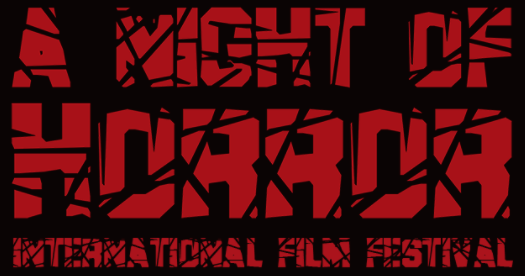SIMON FOSTER: I became fascinated by the mix of a modern, hipster-cool NYC aesthetic and the old-school ‘biblical apocalypse’ mash-up in Normal. What interests of yours coalesced into the premise?
MICHAEL TURNEY: NYC is pretty mashed-up and notoriously a bad place to find a mate so the story of tortured artists who would rather text than procreate is a good setting for the end of the world.
Pingo (Nicola Ferguson) right, has a chance encounter with an old friend, Dana (Jodi Ferguson) on the streets of NYC.
FOSTER: Thematically, the notion of a society disconnected runs throughout the film. From the blindfolded sex scenes, throughout the fragmented first act (the use of the ‘black interstitial’ frames, for example, and the randomness of the hammer attack); also, your protagonist’s adopted upbringing. Do you envision the insularity of modern life as inherently part of our final days?
TURNEY: You can probably gather from the name of my production company [Less Tech More Life] that I feel people are a bit disconnected from one another and the increasing threat of things like global warming and terrorism doesn't really help. So yeah my guess is in the final days, our hands will be on our phones instead of 'across America'.
Nicola Fiora as Pingo, a New York city artist, whose fetish for depersonalised sex is powerfully depicted in the film.
FOSTER: Normal is, above all else, a commentary on the gender divide. One of the first images is the sketch of the hermaphrodite’s dual sex organs; the script is peppered with such challenging observations as, “Women are dying to be controlled by the men we emasculated.” There’s an artful ambiguity to your storytelling; how do you hope audiences interpret your take on ‘The Battle of The Sexes’?
TURNEY: My main theme is always balance and I hope people realize that men and women need each other to maintain it regardless of how frustrated we may be with one another. It's also ironic that I finished Normal in 2015 when the most controversial topic is gender, complete with quotes like Caitlyn Jenner's 'I'm the new normal'.
FOSTER: All of which makes Normal sound like pretty heavy-going, when in fact there is some very deft touches of humour throughout the film. The party sequence, particularly the rantings of the rakish hipster in the awful jumper, lightens the mood just when it was needed. Where did you source a support cast of such idiosyncratic outsiders?
TURNER: It’s NYC! 'Normal' people are actually harder to find.
Nicola Fiore delivers an unforgettable performance as Pingo in NORMAL.
FOSTER: Your leading lady, Nicola Fiore, has a passionate following amongst the underground horror community. Describe the director-actress dynamic that you had to develop to ensure you both trusted one another while filming some confronting sequences?
TURNEY: Nicola gravitated toward the script right away and understood the artistic vision I was going for. She seemed to genuinely trust me early on and that continued throughout the shoot even when I pushed her, which I did a lot.
FOSTER: You shot a beautiful sequence, that moves from the use of horizontal split-screen as Pingo creates her art, to a train station platform and finally to her collapsing at her work. Drops of blood and water bind these scenes masterfully; describe the motifs and symbolism you utilise and what artists and filmmakers have influenced your film language?
TURNEY: I had always seen this visual of Pingo's head exploding with paint, to represent her creative release as well as her psychotic break, and a split screen seemed like the best method. Having started as a comic book artist, I try to compose interesting visuals based on the story but I'm not necessarily attempting to emulate any one director specifically so the fact that people have remarked that it's De Palma-esque is flattering but not what I was going for directly.
FOSTER: Finally, given all the artistry in your framing and occasionally abstract plotting, you wrap things up on a cracking bit of ol’-fashioned ‘end of days’ imagery. Did your local 7-11 let you just walk in and shoot those scenes?!?
TURNEY: I'm afraid it's the 'end of days' for a lot of New York City's oldest establishments and privately owned supermarkets are not exempt but we were fortunate to find one of the last and they agreed to lock us in overnight to shoot the final scene.





